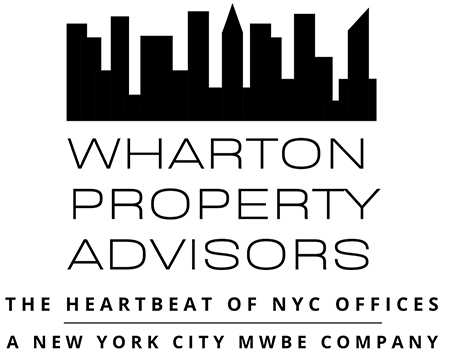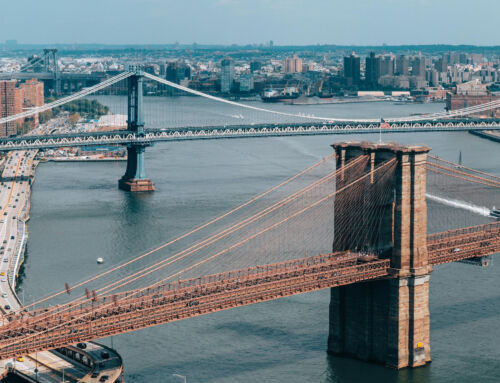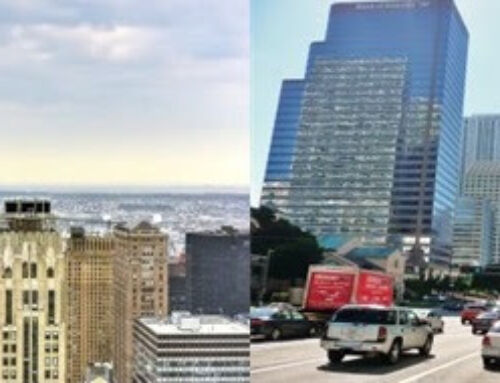Last week there was an article in the New York Times profiling Columbia Business School professor Stijn Van Nieuwerburgh, who is concerned about a potential “doom loop“ for New York City arising from the decline of the office sector. A couple of days later Bloomberg reported a that a recent study by Stanford work from home guru Nicholas Bloom’s WFH Group estimated that due to remote work Manhattan workers are spending at least $12.4 billion less a year due to 30% fewer days in the office. On a more micro level, the average NYC worker is spending at least $4,661 less per year on meals, shopping and entertainment near their offices. That translates to hundreds of millions of dollars if not a billion dollars of lost city and state sales tax every year (a whopping 8.875% combined) and disastrous consequences for the small business ecosystem of stores, restaurants and service providers for those workers, plus huge lost revenues by the Metropolitan Transit Authority from lower ridership on public transportation.
What is to be done? While I strongly reject the notion of a doom loop, we had best take heed of these warnings and take prompt steps to ensure the city’s continued prosperity. In our view, it’s time to stop fiddling around the edges with aspirational statements and budgets while New York figuratively burns. Immediate action is needed. It is only prudent to ensure that the worst case does not happen, and we’ve got some suggestions to jump start business and office activity to complement the city’s ambitious and worthwhile plans. Almost a century ago, President Franklin Roosevelt faced an even greater crisis in the Great Depression. He outlined his dynamic approach in a May 1932 speech by asserting that “bold, persistent experimentation” was needed and that ‘it was common sense to take a method and try it”. And if that method failed, he said “to admit it frankly and try another.”
There has been a lot of talk recently about converting excess offices to residential apartments, which appears to be the solution du jour. Indeed, Mayor Adams wants to fast-track the rezoning of the Garment District in midtown Manhattan so that up to 20,000 units can be built from converted office space. The 24-7 city where people work and play is another excellent idea that has been proposed. In fact, it has already worked in Tribeca (which is now the most valuable residential neighborhood in the city) after 9/11 and it is working downtown in the financial district. However, this will take a decade or more to execute these strategies. All that is well and good, but it is not going to fundamentally change the dynamics of a city dependent on an office-centric economy if employee attendance continues to stay at the 50% level, with Mondays and Fridays well below that de facto equator in the middle. Yesterday’s announcement by Vornado that the Penn Station redevelopment project is on hold for two to three years after all the political capital expended on it by Governor Hochul and others is another canary in the coal mine. Creative solutions are desperately needed to attract workers back to the office now and stanch the tiresome New York to Miami chatter.
Making matters worse, Professor Van Nieuwerburgh and two colleagues at Columbia and N.Y.U. recently projected in an updated article entitled “Work From Home and the Office Real Estate Apocalypse” that in 2029 the value of NYC office properties will have plummeted by approximately 39% or a whopping $49 billion from their 2019 pre-pandemic value. For those of you keeping score (likely at home), they estimate that would result in the loss of $5 billion a year in real estate taxes, also representing 5% of New York City’s the approximately $100 billion dollar budget.
Here is a fresh idea to avoid the urban end times prognosticated by the professors. The best way is the easiest way. We should offer generous state and city tax credits to employers who have their workers come back to the office as well as tax credits to employees who do the same. This will actually be far cheaper than the expensive and uncertain conversion projects that are being proposed which will cost billions of dollars and can easily take a decade or more to complete, and the impact would be felt sooner. The other proposals outlined above are a decade or more in the making and cost billions of dollars for speculative ventures. In contrast, let’s try something really simple which is to give tax credits to employers who induce their employees to come to the office and let’s give tax credits to employees who come to the office. Make them meaningful, up to a couple of thousand dollars a year per employee. The credit can be more for those who do so on Monday or Friday. With today’s biometrics, these items are easily tracked and credit could be given for each day worked.
The return to office tax credit would be something along the lines of the $7500 federal tax credit for electric vehicles, which many believe are a worthwhile subsidy to reduce the use of fossil fuels. The same is true here. We desperately need people back in the office and the city centers and if they don’t want to come back, we need to incentivize them to do so with a meaningful tax credit. The credit could be on a sliding scale, depending on the number of days that people come to the office, with the employer sharing the credit which would encourage them to bring employees back.
Many people fail to appreciate the losses suffered by landlords from half-empty offices have not been limited to the corporate suites. As an important added benefit, these ideas promote equity. Everyday New Yorkers who own small businesses or work in jobs that service those offices, like restaurants, cleaners, and the like that are hardly living high on the hog are part of the ecosystem that has been decimated by the pandemic and has never recovered. It’s no secret that it was largely the most vulnerable members of our communities who worked in service capacities that lost their jobs while office workers continued to work remotely. Accordingly, any policy that brings workers back to the office helps those everyday New Yorkers more than anyone while shoring up the city’s tax base to fund the essential services such as schools, hospitals, police, fire and sanitation. It’s a twofer.
Equally important, this idea is likely to pay for itself. As shown by the WFH study, the absence of office employees is costing NYC big time so every employee in the office is giving something back to the city in the form of shopping and transit fares. Accordingly, it’s worth a few bucks to encourage office attendance. Every additional employee back in the office will be plowing money back into the city’s coffers and contributing to higher property valuations. And the credits don’t even need to be open-ended. We can try them for 2 or 3 years to see if they work.
Consider the alternatives, which include the conversion of office buildings to residential apartments. This idea is admirable, but won’t work in newer buildings with large floor plates and limited windows. Further, it is extraordinarily expensive. As an anecdote, I heard an executive of a major developer say that approximately 12 out of 250 buildings that were presented to him for potential conversion were actually good candidates – that ratio is not promising. Moreover, the conversions won’t yield much affordable housing as the cost of construction dictates they be luxury apartments except for mandated set-asides required by the likely extension of 421b tax breaks for construction that is completed after 2026.
However you frame the issue, inaction and 10-year plans won’t solve this existential problem. Greater imagination and urgency is needed to drive the doomsayers from our urban temple, and there’s no time to waste. It’s a far better alternative than just accepting that the apocalypse is nigh.
Thank you,
Ruth Colp-Haber





